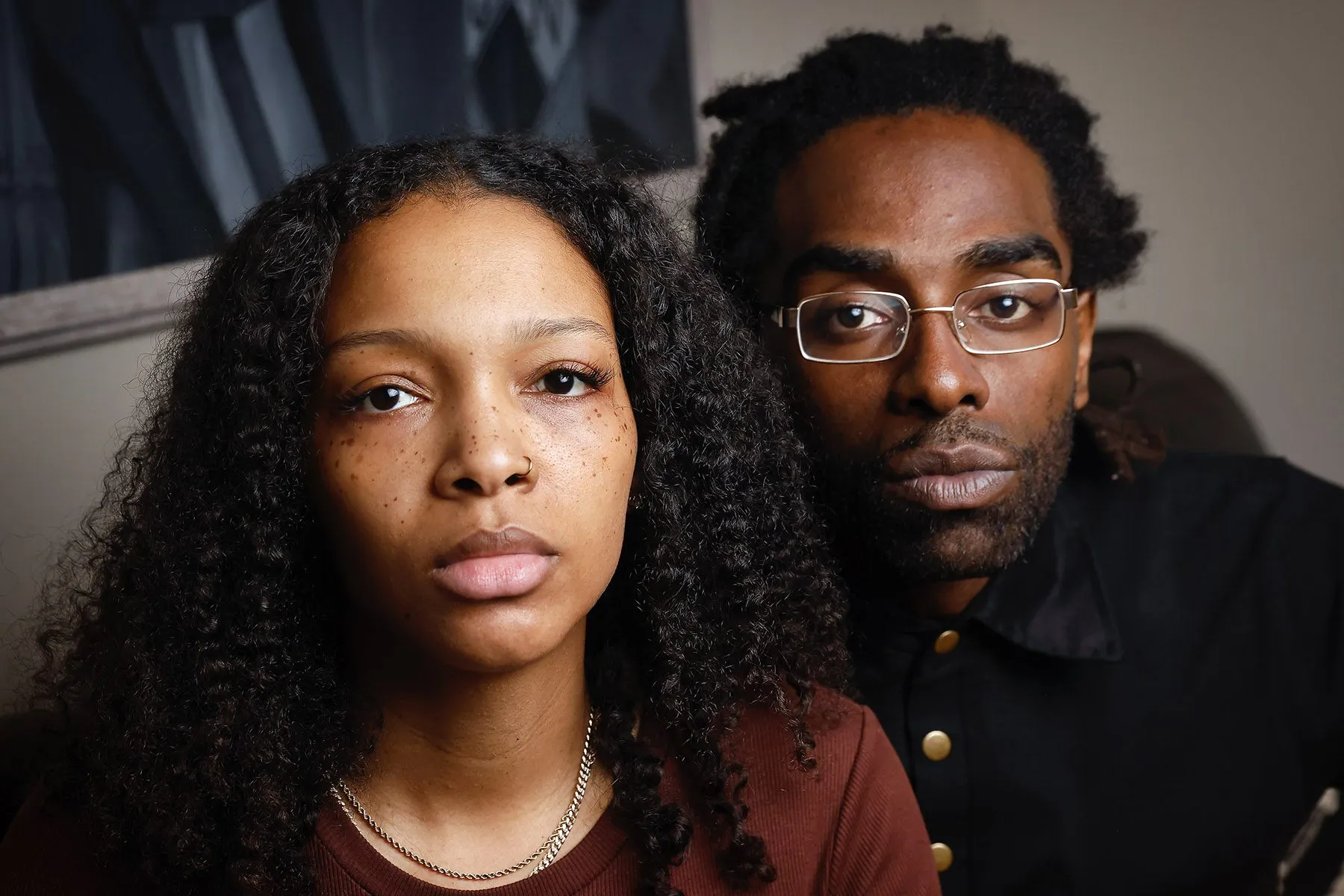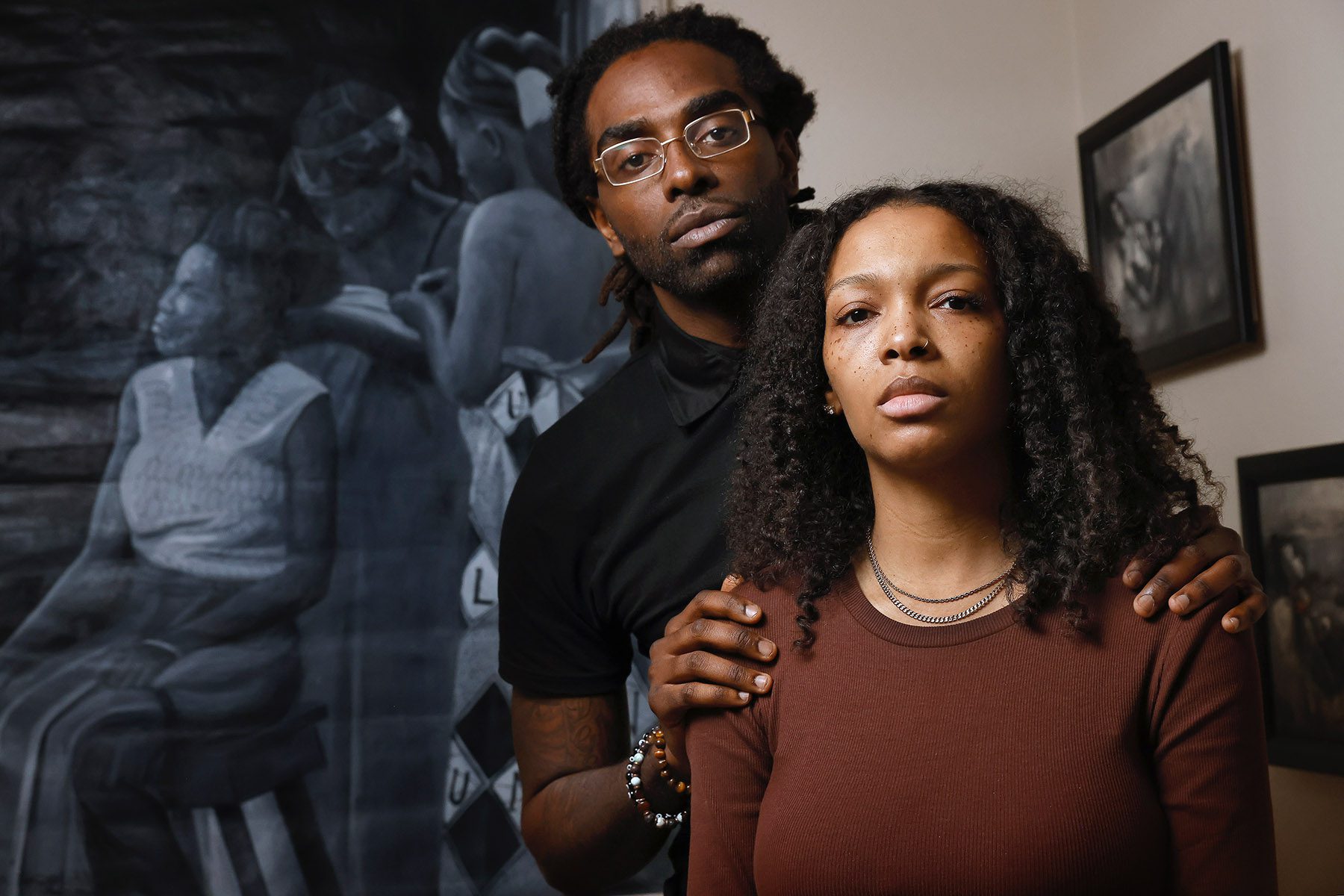Your trusted source for contextualizing the news. Sign up for our daily newsletter.
Editor’s note: On April 20, The Afiya Center announced that Mila Jackson would be returned to her family that day following a late–night decision by Dallas County’s district attorney. “Public pressure and illuminating violations of our most fundamental rights works,” said Marsha Jones, executive director of The Afiya Center. “Mila is finally on her way back where she belongs. But this never should have happened in the first place.” Read the full story here.
A custody case currently unfolding in Texas has separated a newborn from her parents and highlighted two systemic realities in the United States: the policing of Black families by child welfare systems and the disregard of midwifery expertise by many doctors.
It has been 20 days since infant Mila Jackson was taken from her parents by Child Protective Services in Texas after they sought guidance from their licensed midwife to treat a common infant condition rather than following a directive from their pediatrician. Now a court will decide if she’ll be returned to their custody.
“We’ve gone from being treated like criminals, to treated like unfit parents to feeling like we’re being hunted,” Rodney Jackson, Mila’s father, told The 19th. “It’s super disturbing when you’re talking about two people fighting a big system. Nobody should feel like that.”
On March 21, Temecia Jackson gave birth to 6-pound, 9-ounce Mila at the couple’s Dallas-area home under her midwife’s care. Temecia told The 19th that she decided to work with a midwife and team of doulas during her pregnancy and home birth because of two difficult C-sections she endured while delivering her two sons years prior.
Three days after Mila’s birth, the Jacksons visited their longtime pediatrician’s office for a routine checkup, where she was diagnosed with jaundice, a common condition in the blood that affects about 60 percent of newborns.
The pediatrician contacted the couple by phone to discuss treatment options for the jaundice. Temecia told The 19th that the doctor said Mila could be treated in a hospital or at home using a list of criteria he outlined. On the phone with him, she expressed her intention to work with the midwife to begin the at-home treatments.
As the day progressed, however, the doctor’s tone changed, Temecia said. The pediatrician contacted the family at least 10 times through phone calls, texts and voicemails, growing more insistent that the couple take Mila to the hospital. Within 24 hours of Mila’s jaundice diagnosis, he contacted the Department of Family and Protective Services, according to an affidavit filed with the court. The petition for Mila’s removal also included the wrong parents’ names. On Tuesday, March 28, authorities took Mila from her home. A virtual hearing was initially scheduled for Thursday, April 6, to determine whether Mila would be returned to her parents, but the judge postponed it until April 20.
The Jacksons’ story has gained local and national media attention and ignited public outcry through the support of the Afiya Center, a Dallas-based reproductive justice group, and Next Generation Action Network, a local civil rights organization. The case has also called attention to the disparate treatment of Black families by the medical and child welfare systems.
“The very system that is designed to heal us is the very system that is destroying us,” Cheryl Edinbyrd, the Jacksons’ certified professional midwife, told reporters in a news conference earlier this month. “Something has to happen. It has to stop, the attack on families — Black families — the attack on Black midwifery, the attack on Black bodies … has to stop.”
In a letter written to CPS, the pediatrician expressed concern that Mila had a bilirubin level of 21.7, when the healthy range of bilirubin in a newborn’s blood is under 20. “At a bilirubin over 20, a baby risks brain damage because the bilirubin can cross the blood brain barrier,” the pediatrician wrote in the letter. “The treatment is simple in the hospital to give phototherapy and hydration to bring this down.”
The 19th reached out to the doctor’s office for further comment. They declined due to privacy concerns.
The doctor’s letter noted that the parents said they would address treatment at home guided by their midwife, but he feared their approach “may not work fast enough.” Temecia said the doctor grew increasingly skeptical of their midwife’s ability to provide adequate care. But the midwife told reporters she did a video call with Temecia and noticed Mila’s jaundice clearing up. Edinbyrd also did assessments of the baby’s stool that indicated the bilirubin was leaving her system.
Ultimately, four days after Mila’s jaundice diagnosis, CPS removed the baby from her home, took her to the hospital for treatment a week later on April 4 and then placed her with a foster family, according to the Afiya Center. The Jacksons were granted one two-hour visit each week.
The Jacksons’ exchange with their pediatrician highlights some of the misunderstandings about midwives’ qualifications, Audrey Luck, a licensed midwife in Florida, told The 19th. Midwifery practices in the United States were popular within Indigenous and immigrant communities, as well as among Black women in the South known as “granny midwives,” who took care of other Black women and poor White women.
When health care in the United States became more medicalized and standardized in the mid- to late 1800s, physicians who were predominantly White men actively criticized granny midwives in medical journals.
A 1916 newspaper article in New Orleans cited a report from the Louisiana State Board of Medical Examiners that described midwives as “dirty, ignorant, and totally unfit to discharge the duties which she assumes.”
“The midwife must be abolished,” the report stated, “it is useless to attempt a comparison of a midwife with a medical man.”
Childbirth shifted from homes to hospitals almost exclusively. In the 1960s and ’70s, midwifery began to make a resurgence alongside the women’s movement and demands for more body autonomy. This time, however, the recipients of midwifery care were mostly middle class White women, and the majority of midwives were also White women.
More recently, a growing number of Black mothers and people who give birth are working with midwives and doulas in response to the documented bias and racism they experience in the standardized medical industry.
Temecia said that in her case, she noticed a huge difference in the care she received during her pregnancy and delivery with Mila using a midwife, versus her pregnancy and childbirth with her two sons in hospitals.
“I had a team of doulas who were texting my phone making sure I’m eating properly, checking in on my mental health, checking in on how I’m doing physically, all through my prenatal,” Temecia said. “Then during the birth, I was at home and comfortable. … It was a beautiful experience.”
Even with the shift to more midwifery care in the United States, midwives participate in fewer than 10 percent of childbirths in this country; however, midwives in other wealthy countries like Australia, Sweden and Norway oversee a majority of births. These countries also have much lower maternal mortality rates.
Tension between physicians and midwives remains in the United States, Luck said, though collaborative care between the two is important for maternal health outcomes. Health conditions among babies born at home present differently than those in babies born in hospitals, she added. Physiological jaundice, the type that baby Mila was diagnosed with, is much more common in babies born outside of hospitals because these newborns tend to receive more breast milk than formula.
“It can be alarming for pediatricians who see a baby born outside of the hospital with elevated levels that differ from the majority of their clients born in hospitals,” Luck said. “It freaks them out because they’re like, ‘I don’t know if the baby had the proper assessment,’ due to the lack of knowledge about what midwives have the ability to do.”
Temecia said she could sense some discomfort about her home birth during Mila’s check up at the pediatrician’s office. In her follow-up communication with the pediatrician about Mila’s jaundice, Temecia also felt the doctor did not have a good understanding of midwifery care.
In the Jackson family’s case, the pediatrician’s concerns about the quality of midwifery care collided with the child welfare system, another institution that has an embattled relationship with Black mothers and families.

The Social Security Act of 1935 provided the first federal grants for child welfare services, but states have their own individual policies for how they address allegations of abuse or neglect. The majority of states classify certain groups of professionals who are required by law to report suspected child neglect or abuse. These mandatory reporters include physicians, teachers and social workers.
Diane Sumoski, a professor with the SMU Dedman School of Law focused on child advocacy, noted that she does not know all the specifics of the Jacksons’ case, but said that in general, if a doctor feels a child is in danger or is being medically neglected, they have an obligation to report to CPS.
But what someone perceives to be danger or neglect could be influenced by bias, said Darcey Merritt, a professor at the University of Chicago who researches racial and economic bias in the child welfare system.
Speaking generally about her research and not about the Jackson family, Merritt said that in many cases “we’ve got the state coming in, telling poor Black and Brown families, ‘You are not raising your children right,’ But the reason they’re not raising their children to the expectations of the state is often because they are in poverty. They have not had the opportunity with education. They might be under- or unemployed. They might have some housing challenges.”
The racial and economic factors at the heart of the child welfare system can have far-reaching consequences. A 2021 study from researchers at Rutgers University and Duke University found that Black children in the country’s 20 most-populous counties saw consistently more contact with child protective services.
In Texas’ largest counties, the Dallas Morning News reported based on this data that about half of all Black children are investigated by CPS by the age of 18.
When a child is separated from their family, it can wreak havoc on the mental health of everyone involved. But the surveillance alone is also traumatizing, Merritt said.
When it comes to Mila, Temecia told The 19th that it’s difficult to know whether bias played a role in her story, but she’s “not blind to what Black families and Black mothers are experiencing.”
The toll this experience has taken is hard to describe, she said. Her stress is compounded by uncertainty about Mila’s current health, multiple attempts to reach out to CPS for updates, the need to pump breast milk to drop off at the foster care facility — all while she works to recover from giving birth four weeks ago, Temecia said.
“My husband and I did extensive research to find a midwife. Everything went as it was supposed to,” she said. “Then to turn around and have to deal with this really puts a damper on what was such a beautiful experience.”







